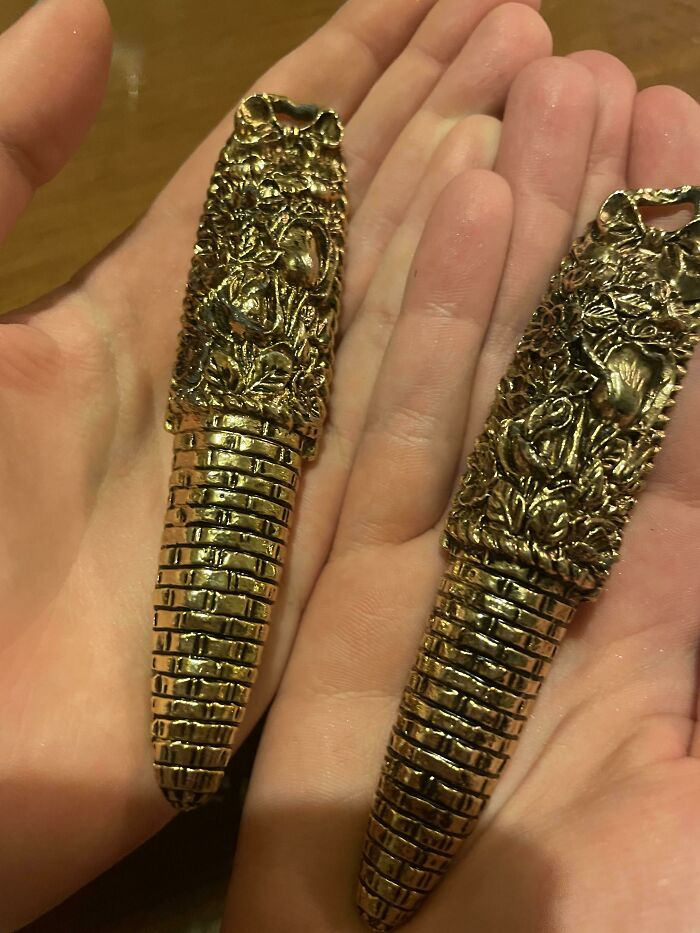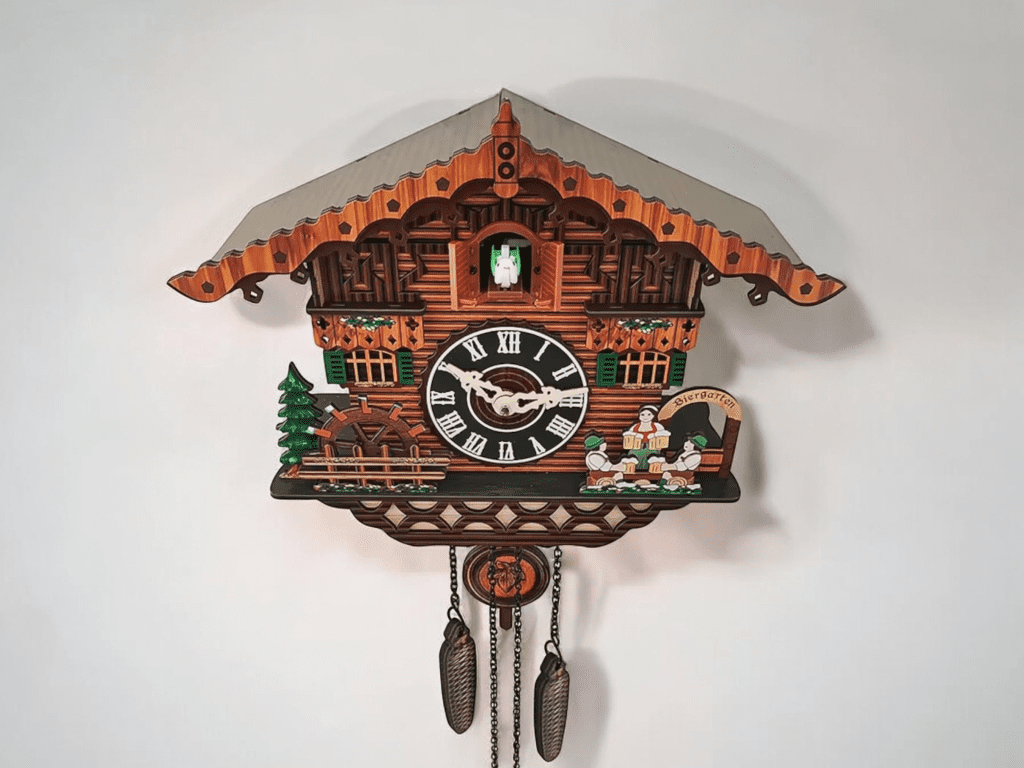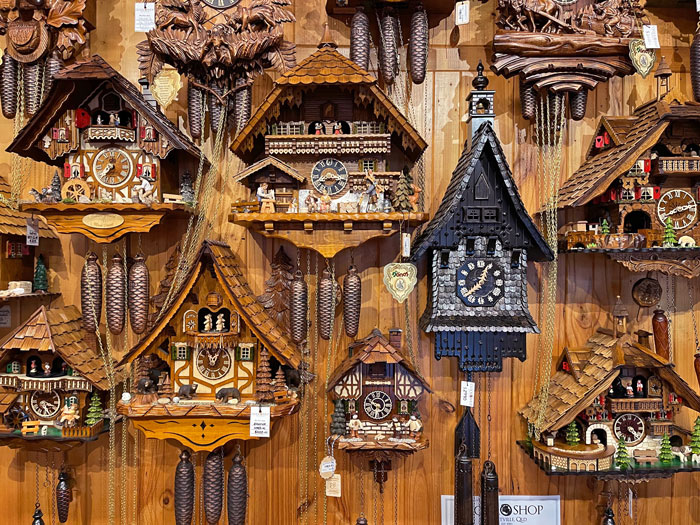Thrift shops are treasure troves of forgotten, quirky, and sometimes downright puzzling items. If you’ve ever stumbled upon some heavy metal objects and wondered what on earth they’re used for, you’re not alone. These dense metal pieces might seem like paperweights or industrial tools at first glance, but they have a more fascinating purpose. So, what are these mysterious objects?

Answer: They are weights used to power mechanical cuckoo clocks. Intrigued? Let’s dive deeper into how these weights work, what they power, and why they are essential to the charm and function of traditional cuckoo clocks.
What Are Mechanical Cuckoo Clocks?
Before we talk about the weights, it’s important to understand the clocks they power. Mechanical cuckoo clocks are beautiful, intricate timepieces, often made in Germany’s Black Forest region. These clocks are known for their detailed craftsmanship, with some featuring intricate carvings of animals, leaves, and traditional scenes.
But what truly makes these clocks famous is the hourly chime—a tiny cuckoo bird that pops out of a small door, chirping to announce the time. It’s a mechanical masterpiece that has been charming clock enthusiasts for centuries.
Yet, behind the delicate carvings and the cute bird, these clocks require a power source—and that’s where the weights come in.
How Do These Weights Work?
So, what role do those dense metal items play? Simply put, these weights are what keep the mechanical cuckoo clock ticking and the cuckoo chirping.
Here’s how it works:
- The clock mechanism is powered by one weight. As the weight slowly descends on its chain, it turns gears within the clock, which drive the clock’s hands, keeping time.
- The second weight powers the cuckoo mechanism. This weight drives the mechanism that makes the bird pop out, the door open, and the iconic “cuckoo” sound play at regular intervals, typically every hour.
The motion of the weights is gradual and controlled, allowing the clock to keep time accurately and maintain the synchronized movements of its hands and the cuckoo bird.
How to Wind the Clock
A mechanical cuckoo clock doesn’t run indefinitely—eventually, the weights will reach the bottom of the chain, and the clock will stop. That’s when it’s time to wind the clock. Here’s how you do it:
- Pull the chains: Each weight is attached to a chain. To wind the clock, you simply pull the opposite end of the chain to raise the weight back up to its starting position.
- Repeat for both chains: You’ll need to do this for both the clock mechanism and the cuckoo mechanism, ensuring that both are fully wound and ready to function again.
Winding a cuckoo clock is a simple task, but one that connects the user to the time-honored tradition of mechanical timekeeping. There’s something special about the hands-on process that makes owning a cuckoo clock a uniquely satisfying experience.
Why Are the Weights So Heavy?

You may wonder why these weights feel so dense. After all, they’re surprisingly heavy for their size. The reason lies in their function.
- Weights provide the power: In a mechanical cuckoo clock, the weights are the sole source of energy. Their weight must be sufficient to turn the gears, lift the bird, open the door, and sound the chimes. The heavier the weights, the longer the clock can run between windings.
- Consistency is key: The weights need to be just the right mass to ensure the gears turn at a consistent speed, keeping the clock’s timekeeping accurate. Too light, and the gears wouldn’t turn properly; too heavy, and they’d move too quickly.
That’s why these metal objects may feel disproportionately heavy—they need to provide enough gravitational pull to power all the intricate mechanisms of the clock.
The Different Designs of Clock Weights
One of the charming aspects of mechanical cuckoo clocks is that the weights often come in decorative shapes, adding to the clock’s aesthetic appeal. While the weights you found might look plain and functional, many cuckoo clocks feature ornate weights shaped like pinecones, acorns, or other nature-inspired designs.
These artistic touches make the clocks not just functional, but also beautiful pieces of art that reflect the traditional craftsmanship of the Black Forest region, where many of these clocks originated.
What Happens If You Don’t Wind the Clock?
Forgetting to wind a mechanical cuckoo clock isn’t the end of the world, but it does mean the clock will stop working until the weights are raised again. Since the entire operation of the clock—from keeping time to chiming—is dependent on these descending weights, they must be rewound regularly.
- For most traditional cuckoo clocks, the weights need to be wound every 24 hours.
- Some more modern designs have an 8-day mechanism, meaning they only need to be wound once a week.

The process is simple, and part of the charm of owning a cuckoo clock is the regular winding that reminds you of its presence in your home.
The Significance of Mechanical Cuckoo Clocks in History
Mechanical cuckoo clocks aren’t just charming timepieces—they are cultural artifacts that represent a long history of craftsmanship. Originating in the Black Forest region of Germany, these clocks became symbols of meticulous engineering and artistry.
Each clock is typically handmade, with many traditional versions featuring hand-carved designs. For centuries, these clocks were a staple in homes throughout Europe and later around the world. While electric clocks have largely replaced their mechanical counterparts, many collectors and enthusiasts still cherish cuckoo clocks for their beauty and historical significance.
Conclusion: The Charm of the Cuckoo Clock Lives On
So, what are those dense metal items you discovered at the thrift shop? They’re none other than the weights used to power mechanical cuckoo clocks. These weights play a vital role in keeping the intricate mechanisms running smoothly, from turning the clock’s gears to activating the beloved cuckoo bird.
While mechanical cuckoo clocks may seem like a relic from the past, they remain treasured for their craftsmanship, charm, and the nostalgia they evoke. Whether you’re a clock enthusiast or someone curious about these historical timepieces, there’s something magical about the way these clocks operate. The next time you see one of these weights, you’ll know exactly how important they are to keeping time ticking and the cuckoo chirping.